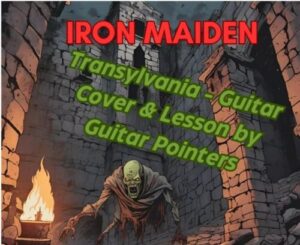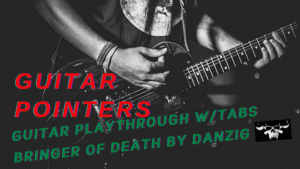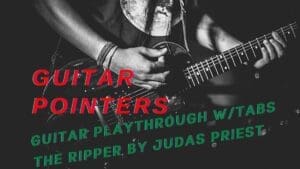Bass Guitar 101: The sound that drives rock music
Bass guitar in the world of rock music, is the one that holds the groove together along with a great drum beat. With a good bass tone that fits right into the mix of the song, there is nothing more satisfying to hear. It’s just what the heart of rock n’ roll has always been about. Heavy metal follows suit with heavy influences being drawn from the originators of it all Chuck Berry, Fats Domino, Jerry Lee Lewis and Little Richard just to name a few. Many of the heavy metal greats still attribute these artists to being a huge influence on their style and playing. It’s only rock’n’roll as the old saying goes.
That being said we will look at the following topics:
1) What kind of metal bass tone are you looking for?
2) How bass tone is king from some of the contemporary masters
3) Setting up for success, how to get that killer bass tone
4) Getting a good DI (direct input) signal
5) What to use in your post FX settings in your DAW (Digital Audio Workstation)
What kind of bass tone are you looking for?
A killer metal bass guitar tone is essential, just imagine asking some of the masters if you could. First person that comes to mind is of course Lemmy of Motorhead. Killer bass guitar tone with a kick ass rig. That pulsating loud thump is what you need in the rock n’ roll arena as that is what drives the heaviness. You might think it’s the guitar and you’d be correct on some level but its that killer bass guitar tone that fills in the void in the mix, either wise the guitars would sound flat, and devoid of any life in the mix. Even if you have a quick listen to some music by Elvis Presley you will note a great presence by the bass and how it sits in background making everything gel along with the drums, kind of keeping the groove moving if you will.
Bass tone is king, some wisdom from the masters
Guitar guitar tone, just can’t fill in the frequencies that a bassist brings to the table. Don’t believe me? Just picture what Rush, Iron Maiden or Megadeth would sound like without the presence of Geddy Lee, Steve Harris or Dave Ellefson respectively in each of their own corners for those 3 amazing bands. All I am picturing is a whole lot of treble and high mid range that would make everything sound muddy and rather noisy.
“My philosophy on playing metal bass is simple,” says Megadeth’s low-end master, Dave Ellefson. “I try to be the mortar between the bricks that glues the building together. I know it might sound weird to base music on architecture, but the analogy really holds true. Without that strong glue, a building falls down. The same can be said for music. – David Ellefson
How to get that killer bass tone
Step one is to get yourself a decent bass guitar. Now I know there might be a lot of opposition to this statement, because of lack of money and running on a tight budget. But the fact is you can find a decent bass guitar out there without completely breaking the bank. Have a quick look through Amazon itself, and if that is looking too pricey for you still; try looking in local pawn shops they are a treasure trove of great musical instruments a lot of the time. I know I have gotten a few great guitars in my day as an aspiring guitarist who was low on cash. And a lot of them I still have to this day. Some of these instruments in pawn shops may look worse for wear, but a lot of times it’s nothing that a little TLC and elbow grease won’t fix.
Getting a good DI signal
Once you plug in your bass it’s time to get down to business
- Use an audio interface such as a focusrite one the lowest costing ones I could find on Amazon. I personally use the Scarlett 2i2. I’ve had this baby for years and it still works amazingly well, very reliable.
- Get your signal going at a good level. Make sure the signal is not clipping otherwise there will be a lot of unwanted noises and popping sounds, which very frustrating and counter productive to your session
- Next step, record your bass track with a dry signal.
- Make a copy of the DI track you just recorded and paste it into a new track. Use an amp sim to give the new track a nice distorted sound. At this point in the process don’t worry too much about the distorted tone even if it’s heavily distorted, because you’ll be applying some compression and EQ to shape the tone within the DAW.
Use Different Post FX Settings
Now that we have 2 bass tracks we can start applying some post EQ treatment as well as compression. I myself use Reaper as a DAW I find it very versatile the in house plugins it comes with are amazing and easy to work with. If you are not a Reaper user, keep in mind that these plugins are available to Reaper and non-Reaper users alike. If you are looking for VST plugins such as compressors, EQ’s and such. These plugins are just awesome to use. The treatment of both tracks will not be the same because of certain frequencies that we want to eliminate and some that we want to accentuate to bring out an outstanding metal bass tone in the mix. These different treatments are extremely important to give you a bass tone some bite and presence in the mix. This is really important, particularly in the world of both rock and metal as the bass is key as I mentioned previously.
Check out this excerpt with a display of bass tracks with just a DI track and in combination with the distorted bass guitar tone; and then last but not least how it all ties together in the mix!
The Clean Tone Bass Track
For the clean DI bass tone track the first step is to start with a setting an EQ. Take away the highs and lows and scoop out the mids rather aggressively. We do this by setting the attack dial to a fast attack setting meanwhile setting the response time to a slow. I usually set it to 1.5 ms for attack and 800 ms for release, with a ratio of 4:1. These parameters are set as such to control the volume of the individual bass notes all the while controlling unwanted frequencies from jumping all over the place throughout the bass track.
The Distorted Bass Tone Track
For the distorted track, this will take some experimentation. By this I mean the ultimate bass tone is really in the eye of the beholder, so it is up to you to find out what the perfect distorted tone is that you are looking for. As a general guideline I’ll EQ with a low pass section to capture anything below 200 Hz and then use a high pass filter at about anywhere between 60 Hz to 80 Hz. This will give your distorted bass tone a mid-range type of sound.
Bass tone blend
Mix and blend the 2 tracks and get ready to play away at your heart’s content. Note once you’ve mixed the two bass tracks and set them at the right level with each other, I would recommend creating a buss track for the bass tones you have just created. All a buss is, is a parent track for those two bass tracks that you’ve just created.This will guarantee that your DI track and your distorted bass track will remain at the correct levels set in respect to one another, and you can control the overall bass level in the overall mix when mastering your tracks.







